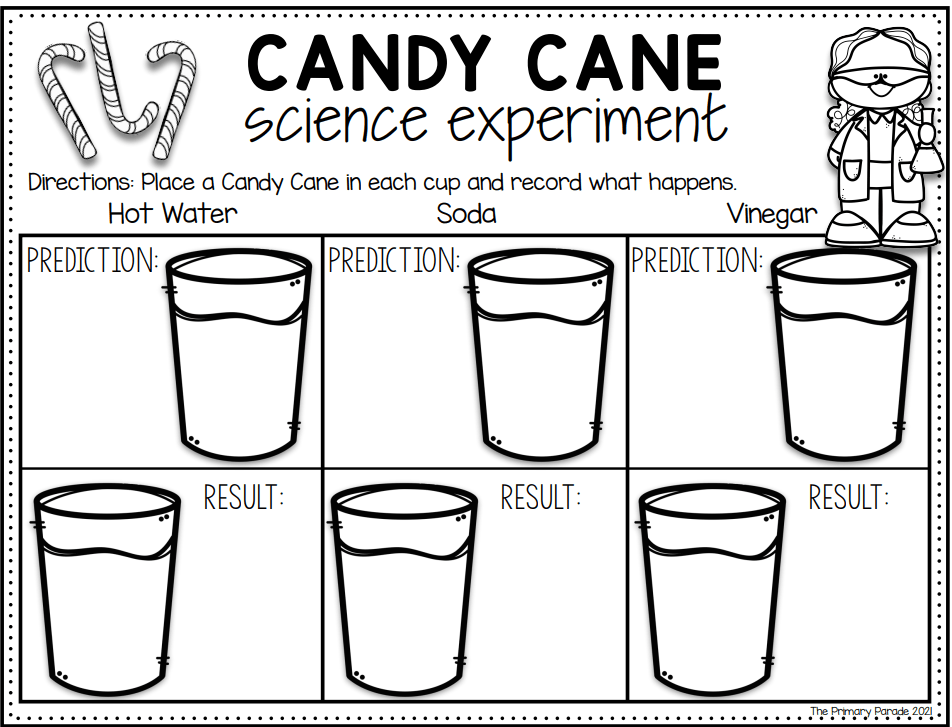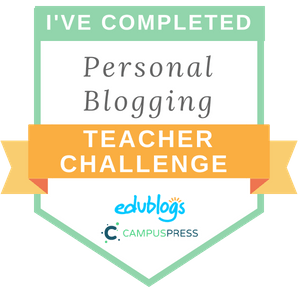Date: December 1st, 2022
By: Hailey Palella
Last Lesson Day: Science~ Making Predictions
I cannot believe that it is December already. It felt like November was yesterday!! When I first walked into the classroom, I asked the students how their Thanksgiving was. The students mentioned that it was good and that they ate a lot of food. I told them that I did too and that my favorite thing to eat on Thanksgiving is ham! Most of the students that I talked too agreed, there were a few students who said, green bean casserole was their favorite, and I said YUUCCCK and the students laughed.
Today was my last lesson day! Today I taught the students Science! My topic for this lesson was forming and making predictions! During Guided Practice, the students will made predictions on what liquid they think will make the candy cane dissolve the most. Students used the Candy Cane Prediction Organizer and drew what they think their candy cane will look like in each of the five different liquids, what the student drew is what their prediction is. After the experiment, the students referred back to their Candy Cane Prediction Organizer and compare and contrasted their drawings to the results of the experiment and decide whether or not their prediction was close to the results or not. Students will never be penalized for making wrong predictions because a prediction is a guess that is based on a students’ prior knowledge and life experiences.
Making predictions does not only happen during reading, but it can also happen in science. For this experiment, students made predictions based off what they know about candy canes and the different liquids that have been chosen, students used their experiences with these liquids to determine which liquid will dissolve the candy cane the most and why. Students drew their predictions before conducting the experiment, which allowed them to visually see their thinking. Students conducted the experiment and found out the result for each of the liquids. Students referred back to their predictions to see whether their predictions were close to the results or not.
Objectives for this Lesson:
Primary Objective(s):
- Create predictions by illustrating the reaction of the materials during the experiment with a rating of 5 out of 5.
Supporting Objective(s):
- Investigate the reaction by using the listed materials to conduct an experiment.
- Explain what predictions are in a complete sentence.
For this lesson I created two anchor charts to introduce predictions to the class and how to make a predication using a prediction sentence starter. Here are images of both anchor charts! (however, these are sketches, I made the actual anchor chart the day of my lesson (today) because I don’t have access to anchor chart paper unless I am at the school!)


Lesson Outline!
- AS: introduction to predictions (what is a prediction?), discussion of how to make a prediction/prediction sentence starters (I think…)
- DI: making predictions based off images, turn and talk prediction scenarios
- GP: have students make predictions on what will happen when a candy cane is placed in each of the cups; students will draw their predictions on the organizer
- IP: students will conduct the experiment in their table groups (with teachers’ prompt)
- C: analyze and discuss results of the experiment, discuss the different types of liquids and the effect of the different liquids on the candy canes, refer back to students’ original predications and discuss what liquid dissolved the candy cane the most and why

My Example

Student Examples


The primary focus of this lesson was to introduce and review making predictions and how we make predictions in science. In the beginning of the lesson, the students were reminded/introduced to prediction sentence starters and before doing the experiment, students had plenty of practice with making predictions during Direct Instruction. During Direct Instruction, the students were provided with an image and the students had to predict what happened in the image; the great thing about predictions is that no answer is right or wrong until proven! Students also did a quick turn and talk activity preparing them for the experiment and allowing more practice before making their predictions about what liquid will make the candy cane dissolve the most and why. Students have learned how to make predictions while reading a story before this lesson, however this is a science lesson and students predicted what happens before they begin an experiment. Students used their prior knowledge to help them formulate their predictions. Once students had their predictions, then the students used the Candy Cane Prediction Organizer to draw and show their thinking. The students revisited the organizer once the experiment concluded, analyzed the results, and looked back at their predictions.

December 8th, 2022
This will be the last day in the classroom! I am so sad but also very happy. This field experience was great and I am so thankful for a wonderful mentor teacher that helped me throughout this whole process. I am going to be really sad the last day that I walk out of the school because I love this school and the students! The students and my mentor teacher were the best part of this whole experience. My MT really showed me what “Loving What You Do” really looks like. I aspire to be the educator that she is and I told her I would come visit her and the students at the end of the year, and after student teaching is over. I am so thankful for this experience because now I can take what I learned and apply it to student teaching!
Making Every Last Minute Count!
I look forward to my last week in the classroom!


Till Next Week! 🙂
posted on December 1st, 2022 at 6:35pm

Leave a Reply